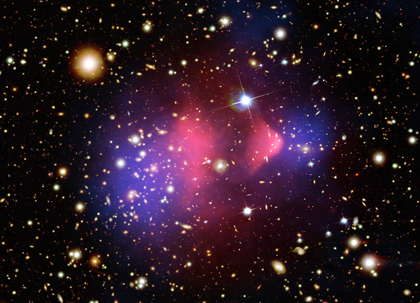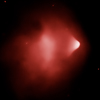R
ramparts
Guest
FractalDirac,
1) I've asked you to be respectful. Calling me "mr rampart smarty pants" because I had the audacity to question you doesn't count.
2) I will check out your paper, but classes have gotten busy and I don't currently have the time I need to put into this. That's why I've been absent lately. But in the meantime, there is something you can do, and that is get more data. You only have 16 galaxies - that's a small number, and a claim as enormous as yours deserves to be better qualified. Simply put, revolutionary physics doesn't get proven by such a small sample, and a claim as large as this is going to necessarily get a lot more scrutiny. Surely rotational speed data exist for more than just these 16 galaxies, so why not dig through the literature and add as many more galaxies as possible?
You should welcome this possibility; if you're right (as you seem convinced that you are), then you know that they'll line up on this graph, and your claim will be even stronger.
Also, one thing I noticed from your last post: you mention there's about a 40 km/s spread around your value of 200 km/s, from 180 km/s to about 220. Why is there such scatter? Does your metric quantization predict that every galaxy around 200 km/s should have the exact same rotational speed?
1) I've asked you to be respectful. Calling me "mr rampart smarty pants" because I had the audacity to question you doesn't count.
2) I will check out your paper, but classes have gotten busy and I don't currently have the time I need to put into this. That's why I've been absent lately. But in the meantime, there is something you can do, and that is get more data. You only have 16 galaxies - that's a small number, and a claim as enormous as yours deserves to be better qualified. Simply put, revolutionary physics doesn't get proven by such a small sample, and a claim as large as this is going to necessarily get a lot more scrutiny. Surely rotational speed data exist for more than just these 16 galaxies, so why not dig through the literature and add as many more galaxies as possible?
You should welcome this possibility; if you're right (as you seem convinced that you are), then you know that they'll line up on this graph, and your claim will be even stronger.
Also, one thing I noticed from your last post: you mention there's about a 40 km/s spread around your value of 200 km/s, from 180 km/s to about 220. Why is there such scatter? Does your metric quantization predict that every galaxy around 200 km/s should have the exact same rotational speed?






